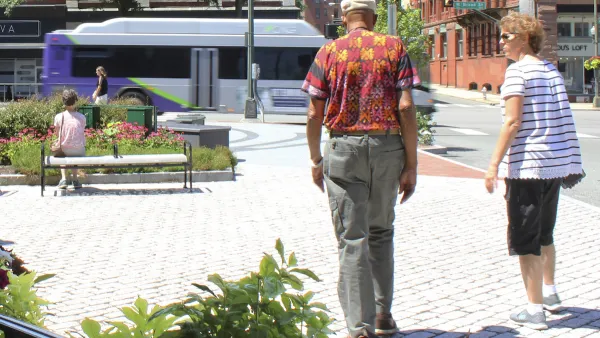Irvine Senior Fellow Joel Kotkin theorizes on the changes that higher energy costs will make to suburban development -- including more telecommuting, more job diversity and cultural attractions, but it will not halt the outmigration from cities.
From the film, "The End of Suburbia" featuring new urbanist guru James Howard Kunstler, to CNN's rating of "best cities" in an oil crisis, high gas prices were thought to doom the suburbs. Joel Kotkin disagrees.
"Ultimately, higher energy prices cannot overcome the realities created by the car-oriented declustered environment in which we now live and work. As Paul Larrousse, director of the National Transit Institute, admits, the option for effective transit use has faded as the nation, and its jobs, have 'spread out.'
"So if we are going to have an increasingly suburban and even exurban future, we need to figure how this can work in a high-cost energy environment. One sensible solution lies in the continuing transformation of suburbs from their old role as commuter bedroom communities into places that offer a larger array of jobs, cultural and commercial opportunities."
Finally, telecommuting will become more common. "Between 1990 and 2000, the number of Americans working full time at home increased by 23 percent to over 4 million. An additional 20 million worked part time at home. Overall, according to the Hudson Institute, telecommuting is growing at about the rate of 15 percent per annum, most of it among the self-employed."
FULL STORY: Suburbia will survive a gas crunch

Planetizen Federal Action Tracker
A weekly monitor of how Trump’s orders and actions are impacting planners and planning in America.

Vehicle-related Deaths Drop 29% in Richmond, VA
The seventh year of the city's Vision Zero strategy also cut the number of people killed in alcohol-related crashes by half.

Can We Please Give Communities the Design They Deserve?
Often an afterthought, graphic design impacts everything from how we navigate a city to how we feel about it. One designer argues: the people deserve better.

Southern Californians Survey Trees for Destructive Oak Pest
Hundreds of volunteers across five counties participated in the first Goldspotted Oak Borer Blitz, surveying oak trees for signs of the invasive beetle and contributing valuable data to help protect Southern California’s native woodlands.

Opinion: How Geothermal HVAC Lowers Costs, Improves Grid Resilience
Geothermal heating and cooling systems can reduce energy costs and dramatically improve efficiency.

Tenant Screening: A Billion-Dollar Industry with Little Oversight. What’s Being Done to Protect Renters?
Reports show that the data tenant screening companies use is often riddled with errors and relies on information that has no bearing on whether someone will be a good tenant.
Urban Design for Planners 1: Software Tools
This six-course series explores essential urban design concepts using open source software and equips planners with the tools they need to participate fully in the urban design process.
Planning for Universal Design
Learn the tools for implementing Universal Design in planning regulations.
Borough of Carlisle
Smith Gee Studio
City of Camden Redevelopment Agency
City of Astoria
Transportation Research & Education Center (TREC) at Portland State University
City of Camden Redevelopment Agency
Municipality of Princeton (NJ)


























